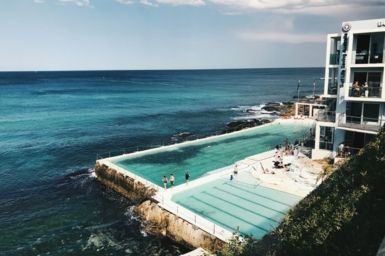Selecting and optimising images for your website in 2025




Learn how to choose images for your website, why optimising images is crucial, and the best practices for ensuring graphics enhance your site's performance, especially if you’re in a visual or e-commerce-driven industry.
Introduction
As the saying goes, "A picture is worth a thousand words." Visuals can make or break your website's ability to engage visitors.
Imagine a potential customer visiting your site after seeing your latest promotion. They’re intrigued, but they don’t convert because the images don’t resonate with them—or worse, the images take too long to load. Choosing the right images for websites isn’t just about aesthetics; it's about increasing user engagement and boosting SEO while ensuring your site performs well.
In this article, we'll explore how to choose images for your website, why optimising images is crucial, and the best practices for ensuring graphics enhance your site's performance, especially if you’re in a visual or e-commerce-driven industry.
Where to get images for your website
Images on websites are similar to magazine advertisements—they should be highly visual, aspirational, and reflect your target audience.
The first question to ask yourself is: What story should your images tell? To answer this, you need a clear vision of the narrative you want to convey through your website and understand who or what it’s about.
When selecting images, there are three ways to do so:
- Professional images — Hiring a professional gives your business a polished and high-quality look. Photographers know what to shoot and which angles will be most effective in aligning with your website’s goals.
- DIY/In-house images—Taking your own images allows for more personalisation and authenticity, especially for smaller, local businesses. It’s an economical and efficient approach, as you won’t need to rely on external providers.
- Stock images — These offer a quick and convenient way to source visuals, but they usually can’t fully represent your unique business or products. While they can't replace custom content, stock images can complement your existing assets when used strategically.
Selecting images for your website
When working with external providers to select images for your website, creating a detailed brief is key. Quality matters—images have a direct impact on user engagement, experience, and conversion rates. Low-quality, pixelated visuals can give the impression of poor attention to detail or an inferior product, whereas high-definition images enhance the professionalism and crispness of your site.
Emotion also drives purchases. Images should evoke positive emotions, showing people enjoying your product or service in a way that resonates with your target audience. For instance, a community website should feature volunteers and community members actively engaged in projects, while a consulting firm’s site may benefit from images of professionals collaborating and working together.
Finally, ensure your images reflect the unique personality of your brand. From the subjects and colours to the settings and composition, everything should align with your brand's aesthetic. For example, a luxury resort’s images should exude relaxation and indulgence, with scenes of guests enjoying spa services in serene environments, creating a sense of tranquillity and high-end service.
Why is it important to optimise images on your website?
Approximately 70% of people report that web page loading speed affects their willingness to make an online purchase. Plus, around 45% of these people will not buy from a website if the page loads slower than they expected.
Optimising images means reducing image resolution size, so that they don’t take up as much space of your online web storage. It also includes making a webpage more accessible and increasing SEO ranking. More than half of website visitors use mobile devices to research purchasing divisions and look up information online, improve mobile speed and mobile SEO and allow users on a slow WIFI connection to still see your website images.
Image optimisation for websites is important for a few reasons:
Improve user experience — By optimising images on the web, you also optimise the user experience by reducing customer frustration and the time it takes to load webpages on your site. It reduces the load time of your webpages and users will appreciate improvements to the convenience and appearance of your site. Overall, optimising images makes your website users happy too.
Boost SEO —You can also improve your SEO for your website. Labelling images with Alt tags allows visitors who are visually impaired or those using a screen reader to understand what is on your site, plus this tag tells Google what is on your webpage. This is also a great place to use keywords. Content Management Systems such as WordPress or Vivo Group’s custom CMS Symfony base provide Alt tag fields for you to enter keywords.
Minimise server storage — The larger the image, video or graphic file, the longer it takes for your website to load. If your media exceeds the recommended limits, your pages may take longer to load. Storing fewer images, or graphics at an ideal size can help keep your website running quickly and smoothly.
How to optimise images for your website
Once you’ve selected the right photos for your website, the next step is to optimise them for both accessibility and SEO.
Choose the right file format
JPEG, PNG, GIF, and SVG are the most common formats used for web images. JPEGs are ideal for compressing images without taking up too much space, though they may lose some quality. PNGs retain higher quality and are perfect for images with transparent backgrounds or graphics that display information such as charts and diagrams. GIFs are mostly used for animations and small image sequences, while SVGs are scalable and maintain quality across all devices, but might not display correctly in every browser.
Optimise file dimensions
Make sure your images are the appropriate size for your site. Headers should typically be around 1024x786 pixels, while background images can be about 1920x1080 pixels. Compress images to reduce loading times, especially for large visuals like headers and backgrounds.
Add alt text
Alt text serves a dual purpose: improving SEO and making your website more accessible. By adding descriptive alt text, you help visually impaired users understand the content of your images and ensure your site is more inclusive. It also allows search engines to better understand and index your images.
Use image optimisation tools
To streamline the process, consider using image optimisation tools or plugins. These can automatically compress and resize images upon upload, saving time and ensuring your site loads efficiently. You can also manually reduce file sizes if necessary, especially for older images not picked up by the plugin.
By following these steps, you can ensure your website images are optimised for both performance and accessibility.
Conclusion
Selecting the right images and optimising them for your website is a crucial step in improving the performance of your website and enhancing the user experience.
Vivo Group specialises in crafting solutions that humanise digital, and bring value to your end users. Our process ensures that your website is developed in line with standards and we provide guidance for image optimisation best practice and guidelines for your website assets to balance the visual quality and performance of your site.
Contact Vivo Group to start your new project, whether it’s a new website or site refresh.



















